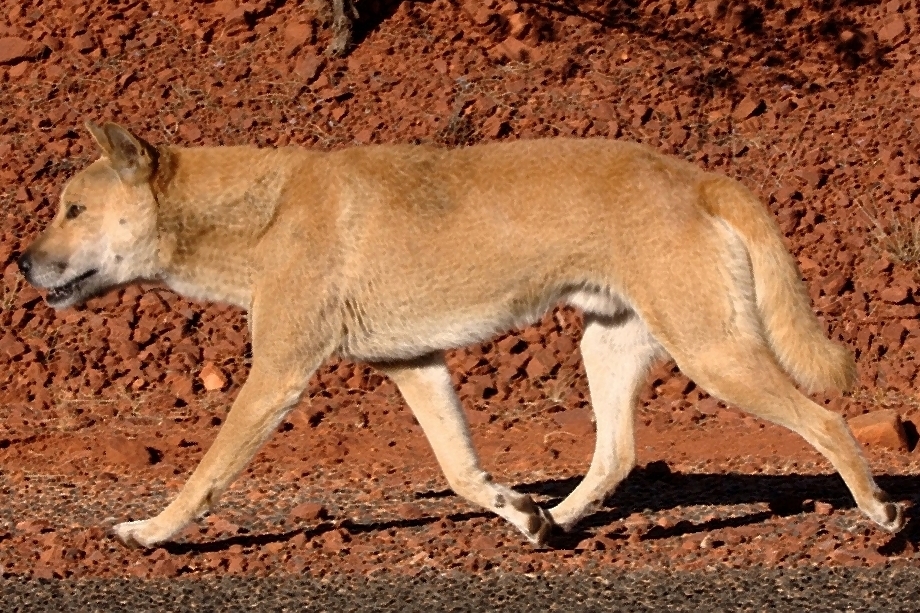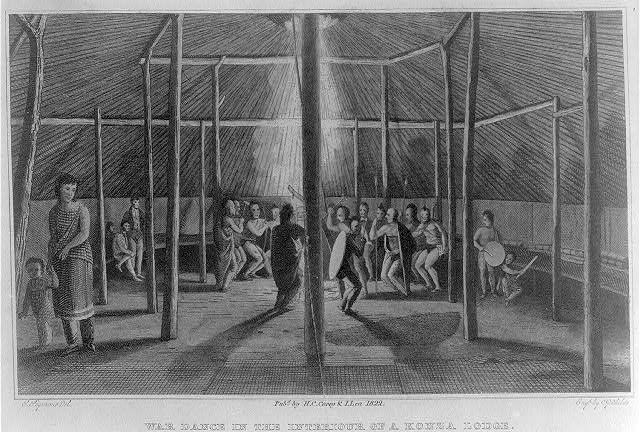|
Platygonus
''Platygonus'' ("flat head" in reference to the straight shape of the forehead) is an extinct genus of herbivorous peccaries of the family Tayassuidae, endemic to North and South America from the Miocene through Pleistocene epochs (10.3 million to 11,000 years ago), existing for about . ''P. compressus'' stood tall. Taxonomy While long thought to be the sister-lineage to the Chacoan peccary based on morphological similarities, a 2017 ancient DNA study which recovered mitochondrial DNA from ''Platygonus'' found that all living peccaries are more closely related to each other than they are to ''Platygonus''. The estimated divergence between ''Platygonus'' and all living peccaries was placed in the Miocene, around 22 million years ago. Description Most ''Platygonus'' species were similar in size to modern peccaries especially giant peccary, at around in body length, and had long legs, allowing them to run well. They also had a pig-like snout and long tusks which were prob ... [...More Info...] [...Related Items...] OR: [Wikipedia] [Google] [Baidu] |
Platygonus Compressus
''Platygonus compressus'', the flat-headed peccary, is an extinct mammal species from the Tayassuidae family that lived in North and South America during the Pleistocene. It was first described in 1848 by John L. Leconte. Description The flat-headed peccary was about 75 cm (29.5 in) in shoulderheight and about 30 kg (66.1 lb) in weight. Other sources have estimated it to be similar in size to the wild boar. Sizes differ between the places they have been found. Fossil skulls suggest a small brain, but a good sense of smell and sight. It has been suggested that the nasal cavity provided filtration for cold, dry and dusty air. ''Platygonus compressus'' had elongated limbs, a short humerus, broad and erect thoracic vertebrae and a large scapula. Therefore it has been suggested that this species may have been fleeter on foot than modern peccary species. Otherwise they probably appeared very similar to their closest living relative, the Chacoan peccary. Gene ... [...More Info...] [...Related Items...] OR: [Wikipedia] [Google] [Baidu] |
Peccary
Peccaries (also javelinas or skunk pigs) are pig-like ungulates of the family Tayassuidae (New World pigs). They are found throughout Central and South America, Trinidad in the Caribbean, and in the southwestern area of North America. Peccaries usually measure between in length, and a full-grown adult usually weighs about . They represent the closest relatives of the family Suidae, which contains pigs and relatives. Together Tayassuidae and Suidae are grouped in the suborder Suina within the order Artiodactyla ( even-toed ungulates). Peccaries are social creatures that live in herds. They are omnivores and eat roots, grubs, and a variety of other foods. They can identify each other by their strong odors. A group of peccaries that travel and live together is called a squadron. A squadron of peccaries averages between six and nine members. Peccaries first appeared in North America during the Miocene and migrated into South America during the Pliocene–Pleistocene as part of ... [...More Info...] [...Related Items...] OR: [Wikipedia] [Google] [Baidu] |
McKay Formation
The McKay Formation is a geologic formation in Oregon. It preserves fossils dating back to the Tortonian to Zanclean stages (Hemphillian) of the Neogene period.McKay Formation at .org at Fossil content [...More Info...] [...Related Items...] OR: [Wikipedia] [Google] [Baidu] |
Giant Peccary
The collared peccary (''Dicotyles tajacu'') is a peccary, a species of artiodactyl (even-toed) mammal in the family Peccary, Tayassuidae found in North America, North, Central America, Central, and South America. It is the only member of the genus ''Dicotyles''. They are commonly referred to as ''javelina, saíno'', ''taitetu'', or ''báquiro'', although these terms are also used to describe other species in the family. The species is also known as the musk hog. In Trinidad, it is colloquially known as ''quenk''. Taxonomy Although somewhat related to true Old World pigs, and frequently referred to as a pig, this species and the other peccaries are no longer classified in the pig family, Suidae. Although formerly classified in the genus ''Pecari'', studies in 2020 placed them in the genus ''Dicotyles'', based on an unequivocal type-species selection; these studies have been accepted by the American Society of Mammalogists. Currently, the IUCN still places them in the genus ''Pecar ... [...More Info...] [...Related Items...] OR: [Wikipedia] [Google] [Baidu] |
Ruben Arthur Stirton
Ruben Arthur Stirton (1901-1966), known to his friends as "Stirt", was an American paleontologist, specializing in mammals, who was active in South America, the United States and Australia. Stirton was closely associated with the University of California Museum of Paleontology, receiving an appointment as curator in 1930 and as its fourth director from 1949 to 1966. His career also saw engaged as a lecturer, associate professorship and then as a professor in 1951, from which time he was director of the University's Department of Paleontology. Stirton was born in Kansas on 20 August 1901, and graduated from the state's university in the field of zoology. He served as the mammalogist on expeditions led by Donald R. Dickey to El Salvador in the 1920s. His expeditions included a return to El Salvador in the 1940s, as well as another collecting fossils in Colombia. In 1953, he directed his studies to the marsupials of Australia, with the intent of discovering primitive species of ma ... [...More Info...] [...Related Items...] OR: [Wikipedia] [Google] [Baidu] |
Sheep Creek Formation
The Sheep Creek Formation is a geologic formation in Nebraska. It preserves fossils dating back to the Neogene period. See also * List of fossiliferous stratigraphic units in Nebraska * Paleontology in Nebraska The location of the state of Nebraska Paleontology in Nebraska refers to paleontological research occurring within or conducted by people from the U.S. state of Nebraska. Nebraska is world-famous as a source of fossils. During the early Paleozoi ... References * Neogene geology of Nebraska {{Neogene-stub ... [...More Info...] [...Related Items...] OR: [Wikipedia] [Google] [Baidu] |
Ogallala Group
The Ogallala Formation is a Miocene to early Pliocene geologic formation in the central High Plains of the western United States and the location of the Ogallala Aquifer. In Nebraska and South Dakota it is also classified as the Ogallala Group. Notably, it records the North American Land Mammal Ages (NALMAs) Hemphillian, Clarendonian, and Barstovian. It also includes an excellent record of grass seeds and other plant seeds, which can be used for biostratigraphic dating within the formation. The Ogallala Formation outcrops of Lake Meredith National Recreation Area preserve fish fossils. Similar specimens from the same unit are found at Alibates Flint Quarries National Monument in Texas. Development At the beginning of the Rocky Mountains uplift, the final floor of the Western Interior Seaway was elevated several thousand feet (thousands of meters) above sea level. The pattern of erosion of material from the northeast into the midcontinent was largely reversed from the previous ... [...More Info...] [...Related Items...] OR: [Wikipedia] [Google] [Baidu] |
Mexico
Mexico, officially the United Mexican States, is a country in North America. It is the northernmost country in Latin America, and borders the United States to the north, and Guatemala and Belize to the southeast; while having maritime boundary, maritime boundaries with the Pacific Ocean to the west, the Caribbean Sea to the southeast, and the Gulf of Mexico to the east. Mexico covers 1,972,550 km2 (761,610 sq mi), and is the List of countries by area, thirteenth-largest country in the world by land area. With a population exceeding 130 million, Mexico is the List of countries by population, tenth-most populous country in the world and is home to the Hispanophone#Countries, largest number of native Spanish speakers. Mexico City is the capital and List of cities in Mexico, largest city, which ranks among the List of cities by population, most populous metropolitan areas in the world. Human presence in Mexico dates back to at least 8,000 BC. Mesoamerica, considered a cradle ... [...More Info...] [...Related Items...] OR: [Wikipedia] [Google] [Baidu] |
Rancho Viejo Beds
The Rancho Viejo Beds is a geologic formation in Mexico. It preserves fossils dating back to the Neogene period. See also * List of fossiliferous stratigraphic units in Mexico This is a list of stratigraphic units (groups, formations and members), containing fossils and pertaining to the North American country of Mexico. List See also * Lists of fossiliferous stratigraphic units in North America References ... References * Neogene Mexico {{Neogene-stub ... [...More Info...] [...Related Items...] OR: [Wikipedia] [Google] [Baidu] |
Kansas
Kansas ( ) is a landlocked U.S. state, state in the Midwestern United States, Midwestern region of the United States. It borders Nebraska to the north; Missouri to the east; Oklahoma to the south; and Colorado to the west. Kansas is named after the Kansas River, in turn named after the Kaw people, Kansa people. Its List of capitals in the United States, capital is Topeka, Kansas, Topeka, and its List of cities in Kansas, most populous city is Wichita, Kansas, Wichita; however, the largest urban area is the bi-state Kansas City metropolitan area split between Kansas and Missouri. For thousands of years, what is now Kansas was home to numerous and diverse Plains Indians, Indigenous tribes. The first settlement of non-indigenous people in Kansas occurred in 1827 at Fort Leavenworth. The pace of settlement accelerated in the 1850s, in the midst of political wars over the Slavery in the United States, slavery debate. When it was officially opened to settlement by the U.S. governm ... [...More Info...] [...Related Items...] OR: [Wikipedia] [Google] [Baidu] |




